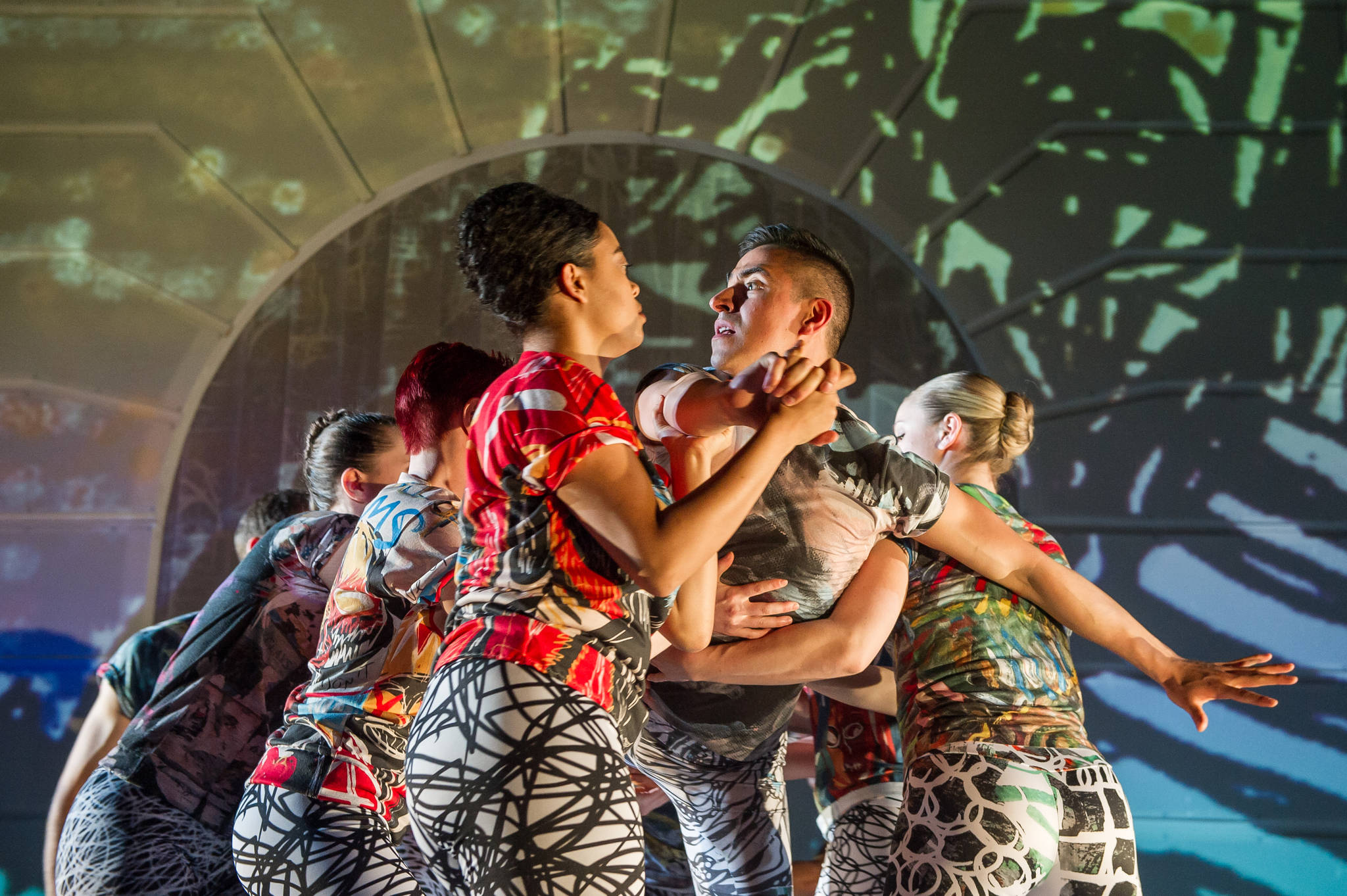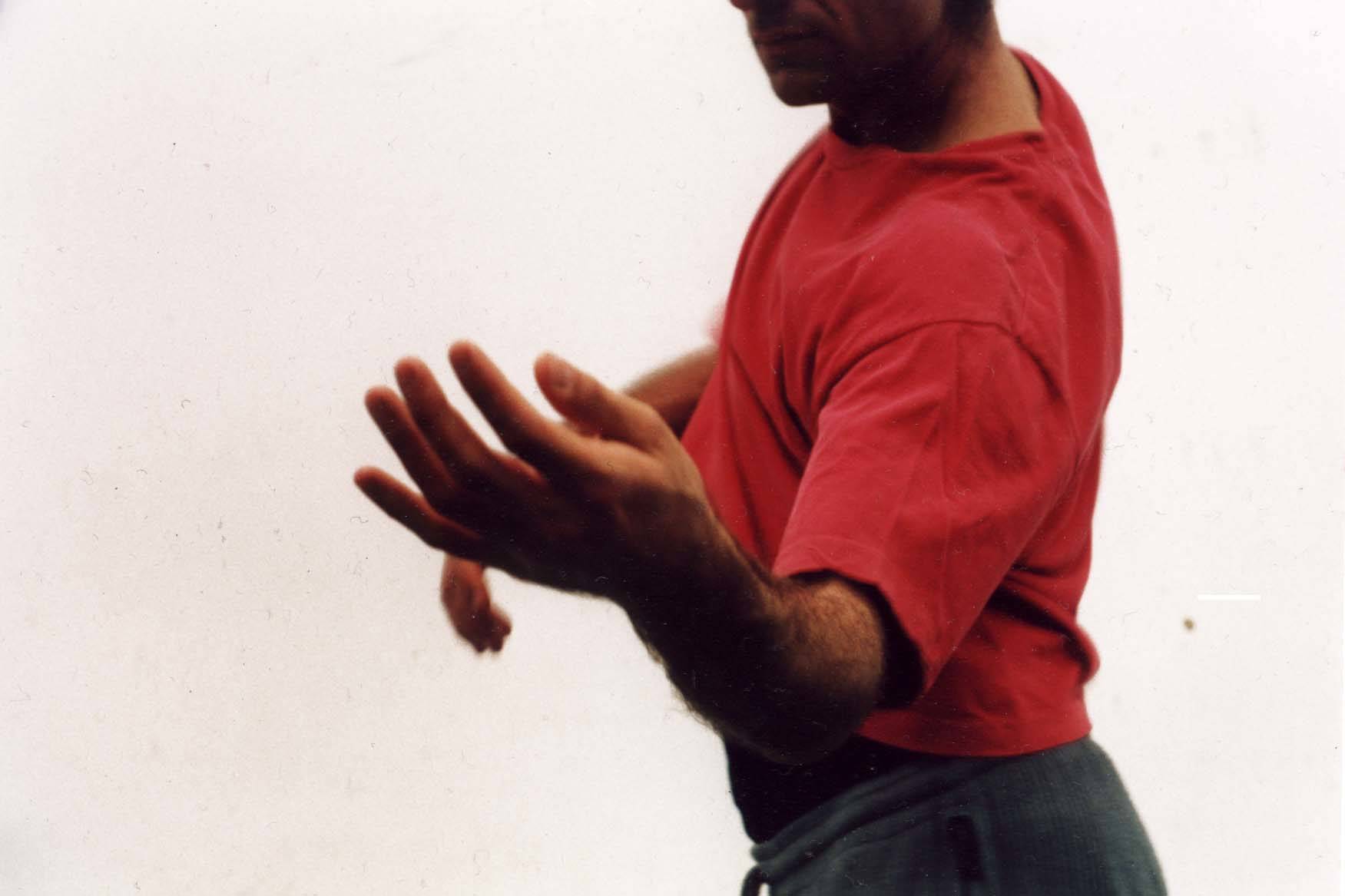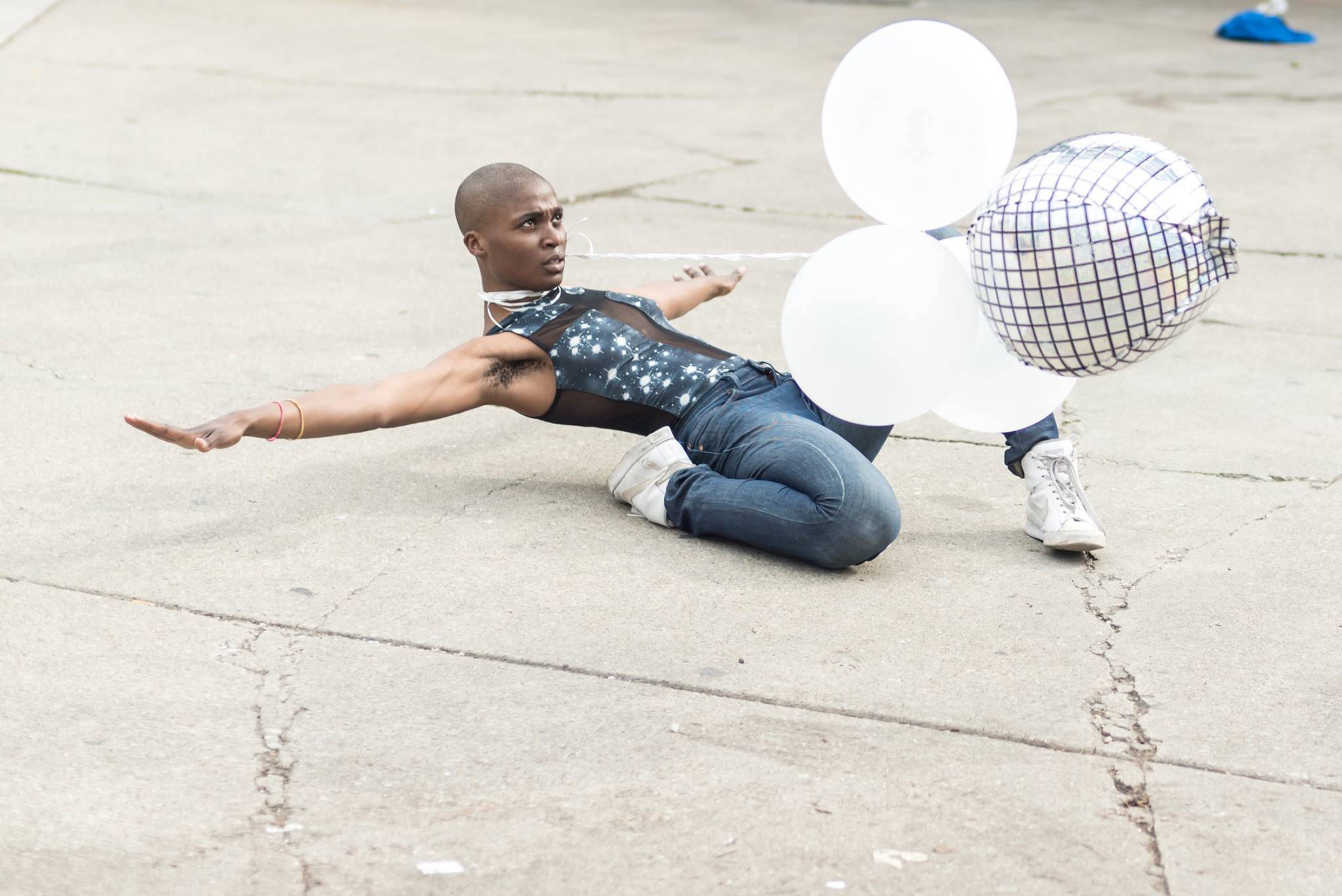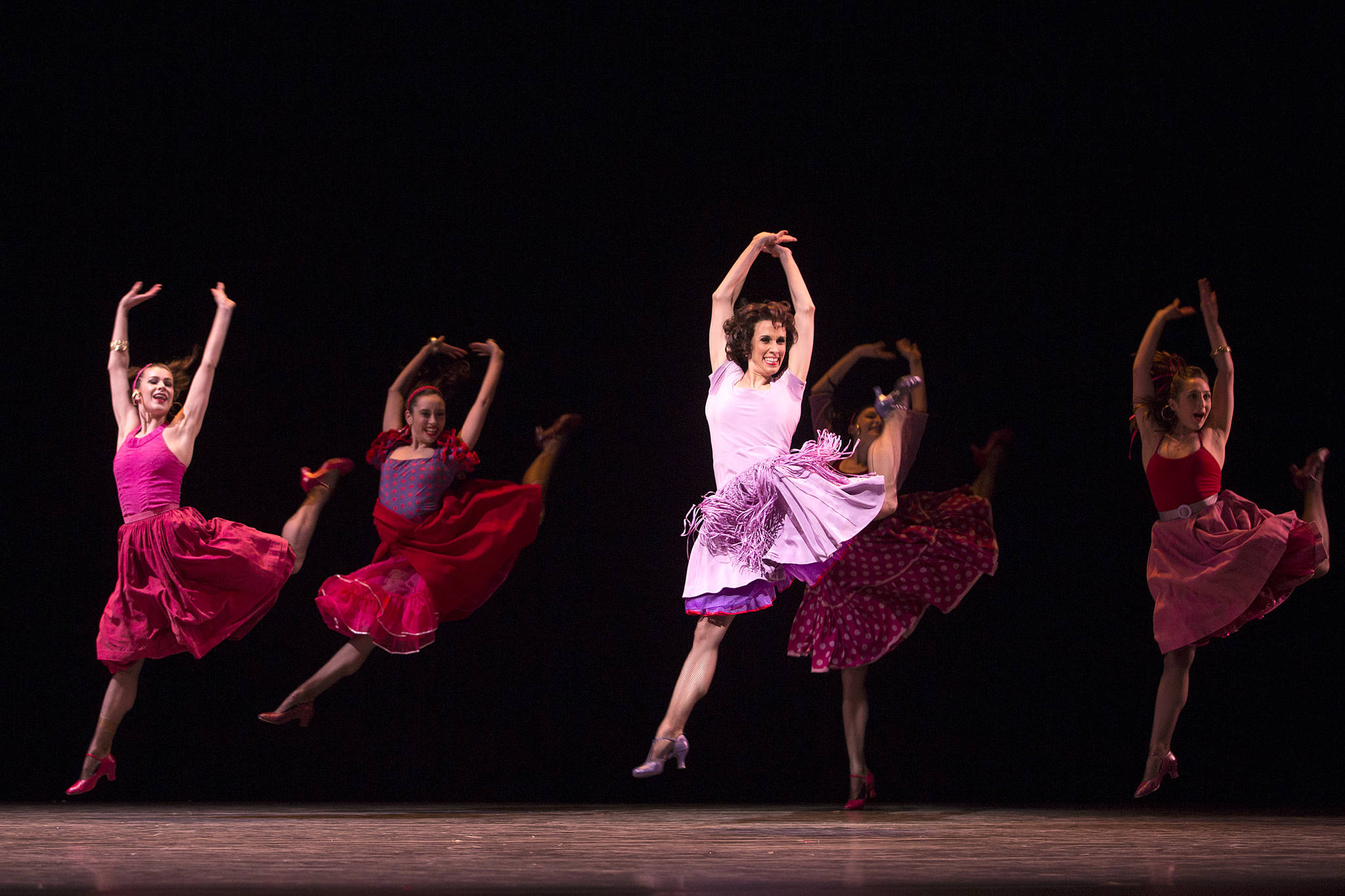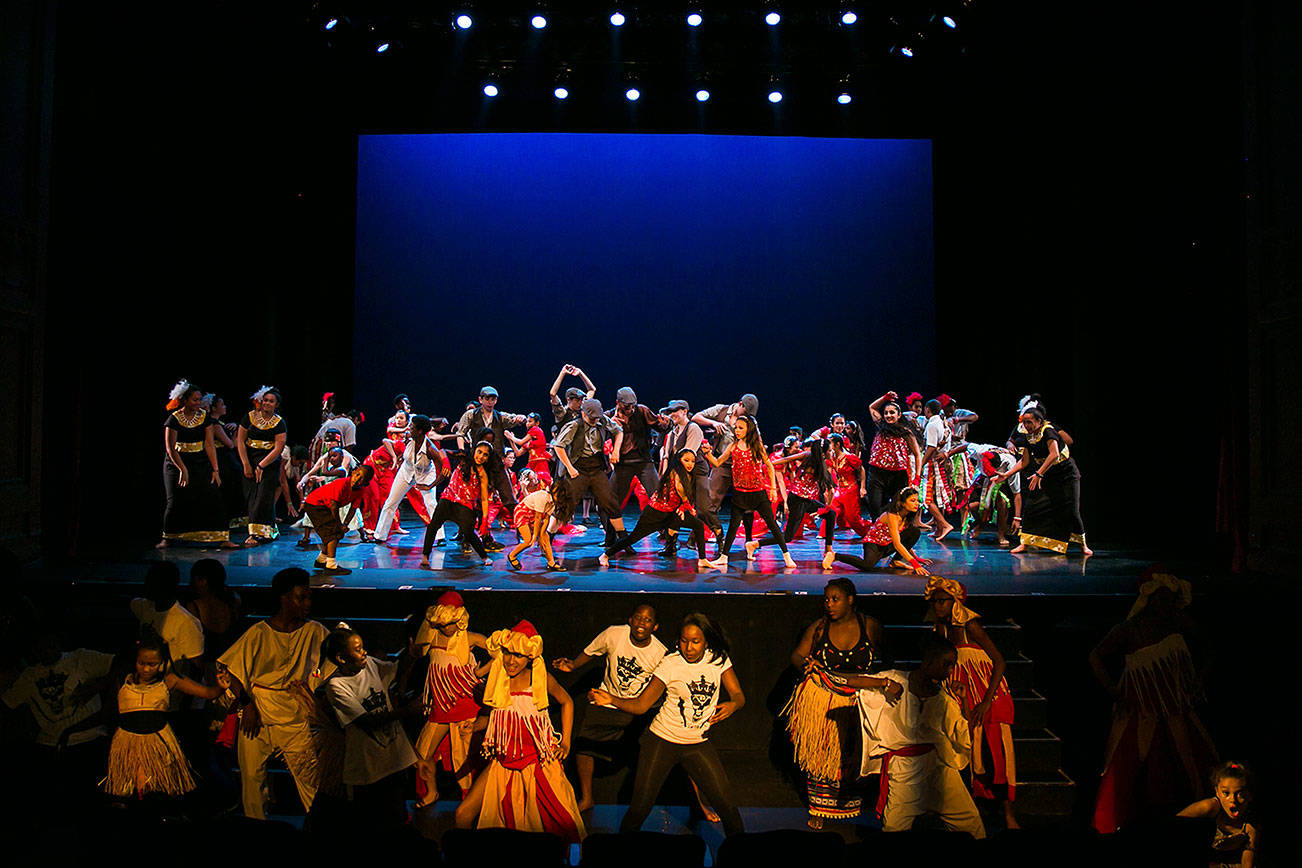No one will ever accuse Donald Byrd of being too subtle. From his take-no-prisoners movement vocabulary to his socially confrontational topics, his work registers an 11 on a 10-point scale most of the time. For several years he’s been working with what he calls the “Theater of Disruption,” a technique to “engage audiences in issues that are difficult and intractable.” His goal is to make his viewers uncomfortable in order to see the world more clearly, and his newest work, (Im)PULSE, follows in that tradition.
Dealing with bias and violence against the LGBTQ community, (Im)PULSE started as Byrd’s reaction to the 2016 shooting at the Pulse nightclub in Orlando, but soon reached back to the 1980s and the chaos surrounding the AIDS epidemic. The result is a dance-theater piece that illustrates these multiple threats—discrimination, disease, and violence. Using narration as well as movement, Byrd launches us into a highly charged world. The work is organized around a story from David Wojnarowicz’s Close to the Knives: A Memoir of Disintegration, a description of a young gay man brutally beaten by a gang. It’s told several times during the first half of the show, by members of the cast and in a recording of Wojnarowicz himself, alternating with scenes reminiscent of club life and drag performance. Adding to the general sense of disorientation, dancers randomly drop to the floor, victims of disease that others have to step over as they walk down a runway or pick up a new partner.
While the Spectrum dancers perform with their usual excellence, the evening is really a tour de force for actor Craig MacArthur, who becomes the victim in Wojnarowicz’s story. With a script by Brian Quirk, MacArthur relates his coma dreams in the second half of the show, reliving the pleasures of first love and the pain of the attack. These stories pour out with breathless speed, alternating with spasmodic seizures and a devastating portrayal of brain damage. Like Dalton Trumbo’s antiwar novel Johnny Got His Gun, it takes time for the audience to realize that all these developments are part of his hallucination—the actual resolution of the work takes us by surprise.
Alongside the texts from Wojnarowicz and Quirk, Byrd has assembled a powerful group of collaborators, especially the sound design by Robertson Witmer, incorporating music by Bob Ostertag as well as an evocative collection of natural and synthesized effects. Scenic designer Jack Mehler’s glossy white building façade becomes a screen for elaborate pen-and-ink drawings by Shawn McQuate as well as a live camera feed of MacArthur during his scenes lying on a hospital gurney. The sum of all these elements can feel overwhelming at times, which is just what Byrd is aiming at.
There are lighthearted moments in (Im)PULSE—in a roll call of notable gay people, the alphabet makes neighbors of Caravaggio and Anderson Cooper—and genuinely tender ones, as when MacArthur describes humans as “oceans full of salty liquids.” But most of the work is a relentless march through a violent present to an uncertain end.
Spectrum is celebrating its 35th anniversary this year—founded in the 1980s with funding from the NEA as well as the city of Seattle, it has proved an enduring local dance institution. Since Byrd’s arrival on the scene in 2002, the company has shifted its style into high gear, but the commitment to dance as an expressive art remains at the front of what they do. Seattle Repertory Theater, 155 Mercer St., 443-2222, seattlerep.org/spectrum. $21–$42. 7:30 p.m. Thurs.–Sat., 2 p.m. Sun. Ends July 2.
dance@seattleweekly.com
